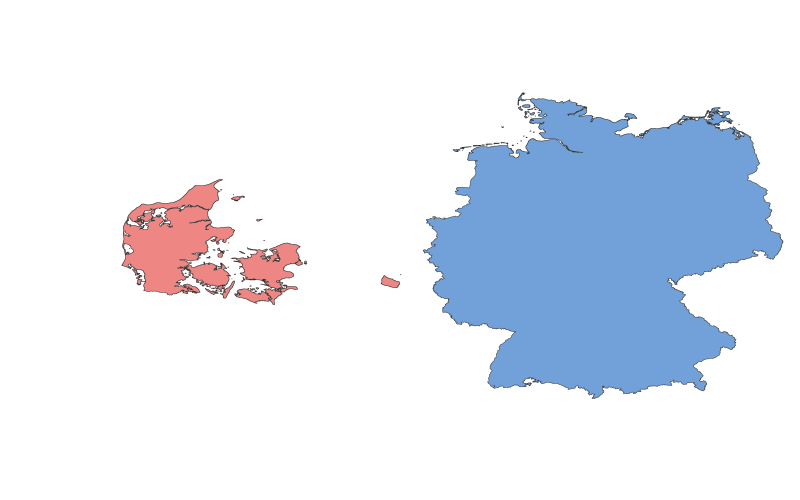Denmark vs. Germany: A Geographical Comparison

Geographical Comparison Table
| Category | Denmark | Germany |
|---|---|---|
| Location | Northern Europe, Scandinavian region | Central Europe, borders 9 countries |
| Size | 42,933 km² | 357,022 km² |
| Climate | Temperate maritime (mild winters, cool summers) | Temperate seasonal (varies by region) |
| Natural Resources | Oil, gas, wind energy, arable land | Coal, lignite, natural gas, timber |
| Urban Development | Highly urbanized, Copenhagen as major hub | Diverse cities (Berlin, Munich, Hamburg) |
| Transportation | Efficient public transport, cycling culture | Extensive Autobahn network, rail systems |
Description of Denmark and Germany
Denmark
Denmark is a Nordic country located in Northern Europe, consisting of the Jutland Peninsula and numerous islands. It has a rich Viking history and is known for its high quality of life, progressive social policies, and strong welfare system. The economy is mixed, with strengths in renewable energy, shipping, and agriculture. Culturally, Denmark is famous for its design, hygge (coziness), and contributions to literature (e.g., Hans Christian Andersen).
Germany
Germany, the largest economy in Europe, is a central European powerhouse with a diverse landscape ranging from the Alps in the south to the North Sea coast. Its history is marked by the Holy Roman Empire, the two World Wars, and reunification in 1990. Germany is a global leader in engineering, automotive industries (e.g., BMW, Volkswagen), and exports. Culturally, it is renowned for its classical music (Beethoven, Bach), beer festivals (Oktoberfest), and historical landmarks like the Brandenburg Gate.
Both countries are members of the EU and NATO, but while Denmark maintains a more compact and homogeneous society, Germany’s federal structure accommodates significant regional diversity.